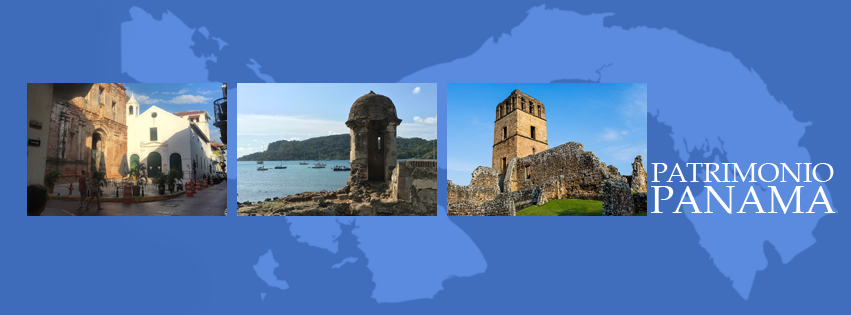Dear friends of Patrimonio Panamá:
Today marks 341 years since the relocation of Panama City, from the place we now know as the Archaeological Site of Panama Viejo, to her current seat on the peninsula occupied by the Historic District of Panama (Casco Antiguo). The 21 th of January, 1673 is a special day, where the geopolitical importance of the strategic position of the port city of Panama in Central America was reaffirmed.
The 21 th of January, 1673 the relocation of Panama City became official 1673 from its original seat in the ruins of Panama Viejo, to another location about eight miles away; a location we know today as Casco Antiguo, within the same city limits assigned to it by the Spanish crown's royal decree of 6 th of September, 1521. These extended from the boundary of the city of Natá, the Chame River to the West; Chepo River to the East; Nombre de Dios to the North, approximately half the distance between the two cities; and the Islands of the Pearls, to the South. Indeed, Panama City was relocated, not refounded, within its original territory, with its Cabildo (seat of municipality), its Royal Court and diocese.
The relocation took place on 21 th of January, 1673, as Don Antonio Fernández de Córdoba executed the royal decree of 31 October 1672, by which the Spanish crown ordered the city relocated to the site called “Lancon” by building in the name of the king the houses for the Royal Court, the Cabildo, and the Cathedral Church; namely, the royal power, the Municipal power and ecclesiastical power for the government of Tierra Firme, retaining the port city on Perico Island, and giving special importance to protect the city by an enclosing wall. In the twentieth century, Panama City Council adopted the Decision No.. 59 of 13 of May 1953 officially declared 15 of August, 1519 date of foundation, considering the 21 January as the date of relocation. On the year 2019, Panama City will be 500 years old.
UNESCO recognized Panama Viejo and Casco Antiguo as the same city, registered in two stages in the World Heritage List, in 1997 and in 2003. Its outstanding universal value is based on the same evaluation criteria for Panama Viejo and for Casco Antiguo, because the relocated city continued its original functions as terminal of maritime and terrestrial routes. Cultural exchange through the centuries, its access to the sea, and the very special setting of the rocky peninsula that protects the historic district gave rise to its urban layout, to the development of its architecture, and to its geopolitical importance, which seduced the mind of Simon Bolivar to celebrate in Panama his Amphictyonic Congress despite the state of ruin in which the city was in 1826, according to maps from the first half of the nineteenth century.
Last year, we celebrated 500 years of the South Sea sighting by Europeans. Both events, the sighting of the South Sea (Pacific Ocean) 1513 and the founding of Panama City in 1519, are inseparable facts. With his sighting, Balboa demonstrated that this land was a new continent to the western world, and also the fact that he had gone across an isthmus. Panama City was born from the order of the Spanish empire to found a port city that would serve as a spearhead for the domain of the new sea and the rest of the continent. From it were established transisthmian routes, Camino Real and Camino de Cruces, and sea routes, linking the port of Panama with other major ports such as Acapulco and El Callao, established after the conquest travels to Mexico and Peru, creating connections that spread to Asia. Its geopolitical significance was worth the cost and effort of reactivating Panama after assault and destruction 1671, transferring it to a nearby site that would allow to quickly reactivate the port in Perico Island, and the Fairs of Portobelo on the Atlantic coast. Panama City and its history can not be interpreted without the sea that surrounds it and that gave it access to the world.
Regards,
Katti Osorio

Approximate boundaries of the city of Panama as royal decree of 6 th of September, 1521.

A single property: Archaeological Site of Panama Viejo and Historic District of Panama (790bis) (Panamá)
Related Reading: “State of Conservation Information System Update”, and “The Historic District of Panama and Criterion (vi) of Outstanding Universal Value”

